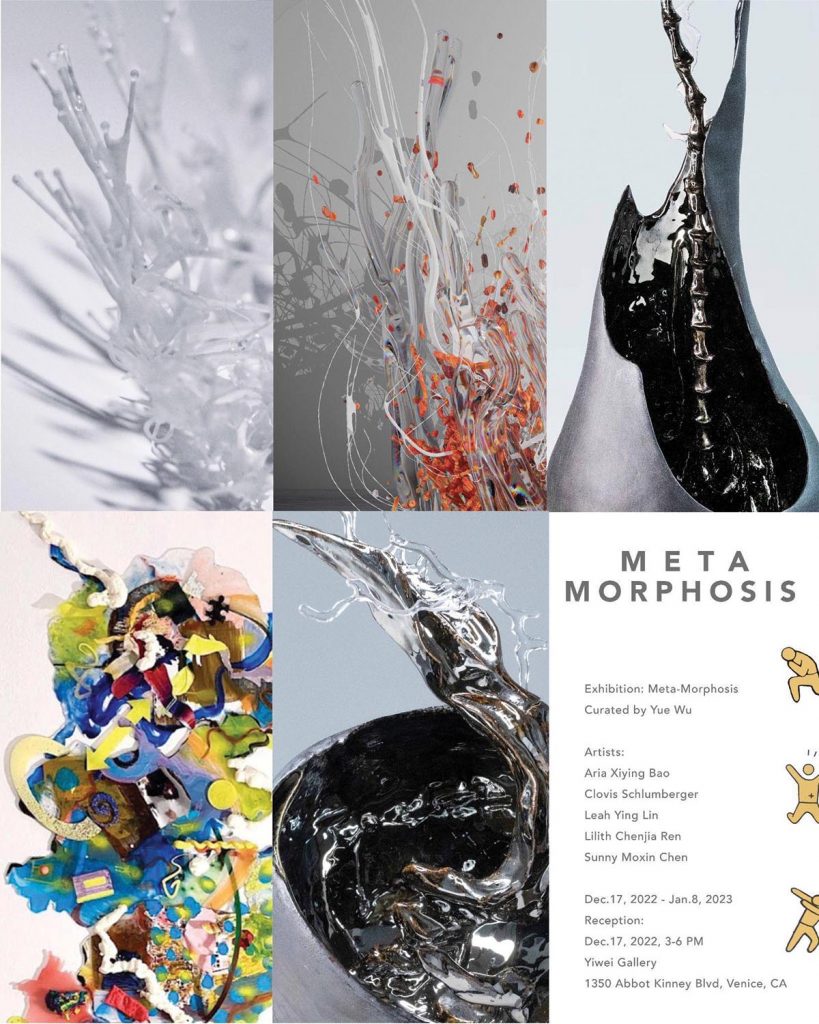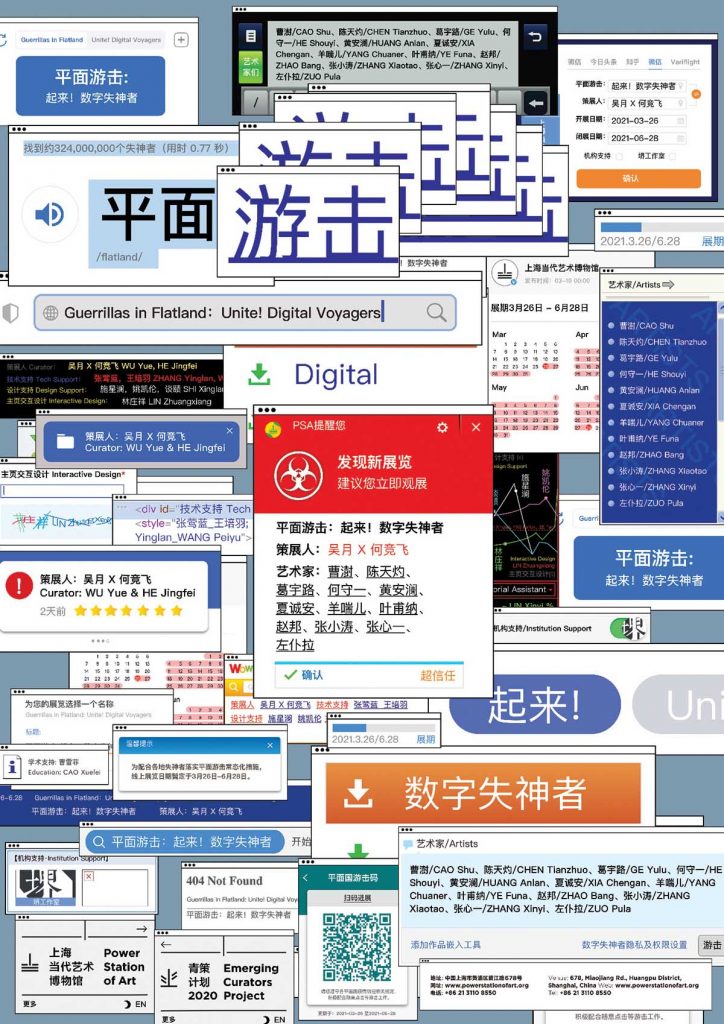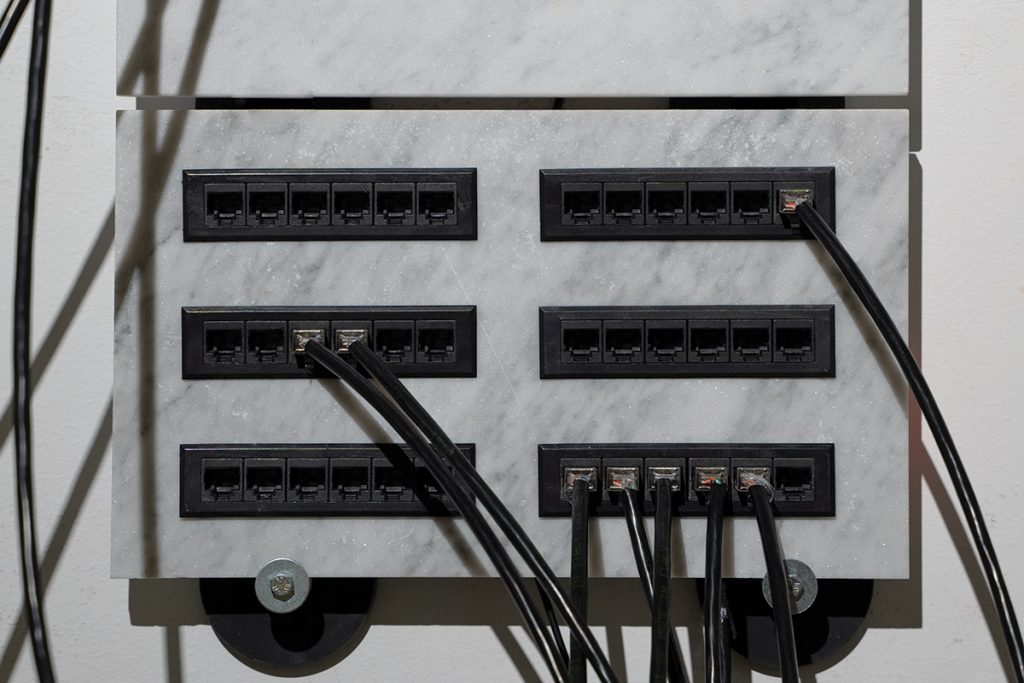Post Digital
The digital art scene and a ponderance on its relevance and future

The sci-fi interpretation of the future in the post-war world and in my childhood invariably included machines which took over the world as well as portals into other dimensions, parallel worlds, whether philosophical, psychological or material and I have no doubt that since the advent of the internet era, we are living in two worlds. Concurrently, and in order to explore those other worlds we dreamt of, we have created the portals ourselves. We have created the portals, and constructed the worlds ourselves.
Such have we reduced the size and relevance of our planet, that it seems to me we are bored by the ease to navigate it – and frustrated by its limitations be they as they are exposed by this same technology that we have organically moved to creating alternate realities. The frustrations which fueled the construction of virtual lives seem even more powerful than the frustration at the unforgivable, irreversible damage we have caused to the stage on which we act out our real lives on. And just as sci-fi authors predicted, we are more engaged with creating alternates than applying ourselves to understanding even, let alone reversing the physical damage in the tangible world.
And this misplaced feeling of necessity has proved once again to be the mother of invention and the drive for creativity. Technology and new media are driving inspiration in the art world, not simply as tools, but as partners, collaborators in the form of AI. As extensions of the games we used to play with our senses, as alternatives to our eyes, ears and brains – as ways to tantalize the eyes, ears and brains of our communities and audiences.

I used to think people wanted to escape – now I think they just enjoy living across two realities.
And I don’t believe this is simplistically escapist. I used to think people wanted to escape – now I think they just enjoyliving across two realities. Two ‘realities’ which are subject to manipulation – one records maneuvers faithfully and authentically (the machine), while the other relies on the willfulness of the human and their loyalty to truth to elucidate to its history.
Artists and others are calling this period the post-digital one.

“I see the postdigital as a theoretical figuration that is preoccupied with the understanding of how we currently relate to the digital (and vice-versa), other than about defining a historical time. We are essentially blurring our lives and boundaries with the digital, evolving into new characteristics: we are leading hybrid lives.” Says artist Matthew Attard, who in his latest work experiments with machine generated multi-dimensional interpretations of drawings done with the help of an eye tracker as well as analysis of eye-tracker recorded reactions to consumer behaviors on social media platforms such as that presented in his online work ‘Here’s how I did not see what you wanted me to see’ produced by Blitz Gallery, Valletta (2022).

“Therefore, the digital is not a matter of it being a tool for us to merely use and think about, but we think – with it in mutual and expansive ways. In this view, I draw with technologies such as the eye-tracker, 3D scans and 3D software by acknowledging the digital’s agency as contributing to the process of art-making. In a way, the digital cannot be considered as immaterial anymore (it’s not just virtual anymore, and it’s highly dynamic) – this would also help us see it from a more critical lens with the potential of raising questions and conversations that also need to have ethical dimensions (for e.g. environmental impact of digital technologies and post-capitalist issues among others). Art, and in my specific case – drawing, can infiltrate, misuse, adapt, adopt, collaborate and make-with the digital among other notions, with the capacity to add to and instigate current conversations.” Adds Attard.

But the discussion of portals and realms in which art forms exist and engage with reality is only one exciting aspect of post-digital art. There are plenty of functional reasons these media are so tantalizing. Works in Digital media are easy to transport and transform.
They are also acceptably multipliable. And easily copied. The rise and rise of the non-fungible token concept, exploding into the jargon of the man in the street in no time, has both initially cheapened the idea of coveting and owning and collecting virtual work while at the same time making it feasible and enticing for the artist to have post-digital media dreams. Pace Gallery recently announced the purchase of a first set of NFTs by the Centre Pompidou, and many other notable institutions are doing the same.
Suffice to say, the University of Malta offered a Digital Arts degree before it offered a Fine Arts one, and hybrid exhibitions exploring the possibilities, nuances and fears associated with the existence of the virtual, digital world are commonplace in Malta with the most intriguing to date probably having been the Non-aligned Networks at Valletta Contemporary in 2019, curated by Yasemin Keskintepe and featuring works by artists such as Egor Kraft.
At the time of writing, Gozo-based artist Austin Camilleri has a work in the form of a Video projection entitled Issa Dalam | Night has Fallen on the facade of the Anchorage Museum in Alaska as part of his hybrid residency at the museum which was first exhibited at the BOZAR in Brussels in 2017.

This work uses time as a way of investigating transience and timelessness in an ever-changing oceanic landscape. The sea facilitates the movement and interaction of people, ideas, and ecosystems and horizons may become threatening barriers as well as destinations for future hope. The clock in the visual marks Alaska time (hin) in Maltese, a Semitic language similar to Arabic over the passing of time (żmien in Maltese). The rhythm of the video alludes to traditional bell clocks, widely in use in the Mediterranean, where the strike is on the quarter hour rather than on the second.
“ISSA DALAM is not an NFT,” says Camilleri, “it was created in 2017 as a physical installation using digital tools, and I’m interested in seeing it in a physical space. A work of art completes itself only through a dialogue with the viewer. Issa Dalam has been shown in 3 museums, and while the work was created physically, captured on video and animated, it has been shown in 3 different formats. I’m open to this opportunity and intrigued by the dynamics this can create, both physically and contextually.
Although I’m curious about NFTs, I’m still not curious enough to have ever reasearched its dynamics. The contamination of media and processes might be more pronounced nowadays, but art has always been such a place. What’s important, in my opinion, is not the medium itself; it’s that the medium or media are a fluent way to sediment an idea. Even more, sometimes the medium/process are an intrinsic part of the work itself, not only as a way to produce it, but inform its being, are the essence of the work. Digital works are easier to travel, but at the end of the day, it’s always a question of narrative, both of the works per se, the exhibition itself and the curation.”
Q&A with YUE WU
Hotly-tipped emerging curator Yue Wu currently pursuing an M.A. at Harvard University whose academic interests lie in the social and cultural construction of aesthetics, and the relationship between art, technology, and politics in the contemporary world is specializing in showcasing future-facing NFT art.
Yue curates exhibitions that showcase the work of underrepresented and emerging NFT artists. I caught up with her to pick her thoughts.

JD – We have blurred the line between the digital and the real in pretty much every aspect of our lives. Do you think digital art will take over material art or will it continue to exist in a parallel universe?
YW – In my opinion, digital art and traditional fine arts will thrive alongside each other and even collaborate in hybrid forms. As we increasingly merge our physical and digital existence, it seems natural that the arts would follow suit.
As a curator, I’m constantly exploring new ways to showcase digital art. In 2021, I curated an online exhibition at Power Station of Art Shanghai, where I presented digital artworks in a web-based context that allowed viewers to interact with the pieces by clicking on different elements. Recently, in Los Angeles, I invited artists who previously worked with digital art to create physical pieces, resulting in a fascinating mix of 3D printing, metal printing, laser cutting, etc. I’m convinced that as technology advances, we’ll continue to find new ways to enhance the visual experience of digital art.
JD – From your experience as a curator, would you say NFT consumers and collectors are maturing after the initial mini-boom which risked tainting the reputation of the serious collector and artist?
YW – I believe that NFT consumers and collectors are gradually maturing and gaining a deeper understanding of the value of digital art. While many people initially saw NFTs as a way to make quick money, the reality is that art is not always a good investment. I always advise collectors to focus on buying art that they genuinely appreciate and enjoy.
NFTs have emerged as a new way to distribute and collect digital art. Unlike traditional art, which can be physically owned and displayed, digital art is inherently ephemeral and difficult to own in a tangible way. NFTs provide a way to certify ownership of a digital artwork, which is a step forward from the old way of simply receiving an artist-made flash drive or a blue-ray disk. While there are still some uncertainties and controversies surrounding NFTs, they are currently the best option we have for digital art collection.
JD – what are your unique tips for artists wanting to create NFTs of their digital work?
YW – My advice to artists is to focus on creating high-quality artwork first and foremost, and then consider the best ways to exhibit or sell it, whether as NFTs or screen installations. When it comes to digital art, there are many different forms it can take, from video art to generative art, and each requires a different approach to NFT creation.
For example, if an artist is creating video art, each frame of the video can potentially be turned into an NFT. Generative art, on the other hand, is often created using algorithms or code, and can be sold as a series of unique iterations or variations. Ultimately, art comes first. The key to creating successful NFTs is to create digital artwork that is unique, visually stunning, and emotionally resonant.

It is fascinating to observe and follow how digital media, as well as art created with the help of digital tools and AI is positioning itself in the art world – where rather than nudging physical and more traditional media aside as many expected, a parallel existence has been carved; and rather then becoming a world for escapists, it is suspended in parallel – as if we are adamant to have two worlds – two lives because we are restless, bored and need the challenge of existing in multiple dimensions to keep us interested in life.









